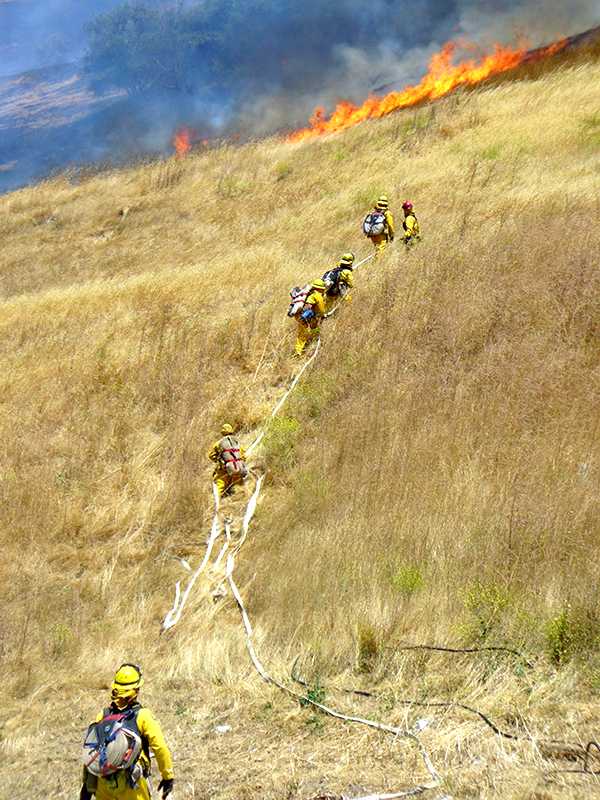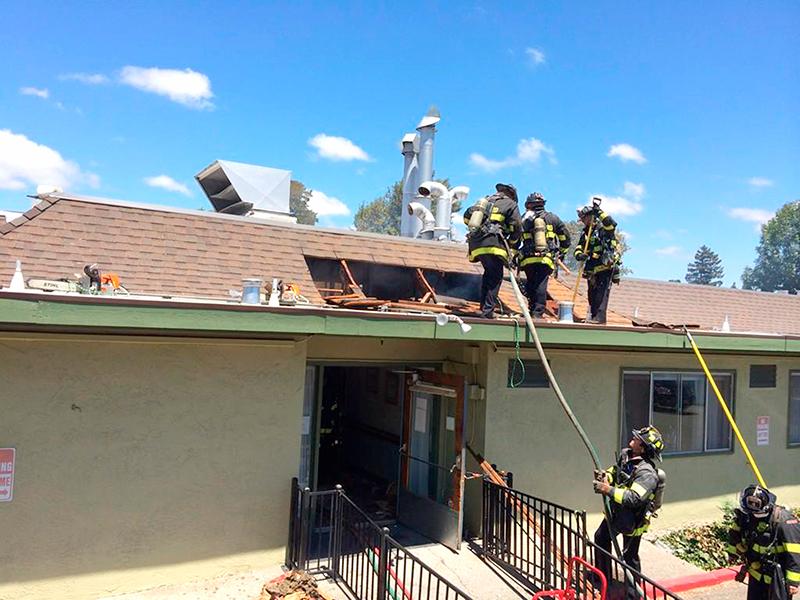Hayward Fire Department educates the community on fire difficulties
Hayward Fire Department stresses dead brush and eucalyptus trees pose a threat to homes.
August 7, 2014
On Saturday, the Hayward Fire Department held a workshop and planning session to educate community members about the looming difficult fire season.
The meeting, held at Stonebrae Elementary in Hayward, included presentations from Hayward Fire Chief Garrett Contreras and Staff Captain Don Nichelson, including a brainstorming activity where residents pinpointed the most fire prone areas of their neighborhoods.
An incoming grant from the California Fire Safe Council and a $25,000 grant from Pacific Gas and Electric Company prompted the meeting.
“You are in charge of how these funds are spent,” said Cheryl Miller, a California registered landscape architect assisting with the presentations. “Our funder[s] want prevention.”
Ziele Creek Defensible Space, which includes the Hayward Hills, Fairview Fire Protection District and Garin-Dry Creek Park, are the main focus of Hayward’s firefighters.
According to the presentation, the steeper the hill, the faster and hotter burns the fire. In a normal weather pattern during a Bay Area fire season, on-shore winds theoretically would push flames up Hayward’s steep foothills east of Mission Boulevard, creating a fast moving and hot burning surface and brush fire. But, during a Red Flag Warning, Diablo Winds pushing west from east, fire in the Hayward Hills would prove erratic and difficult to contain, able to change direction in a matter of seconds.
The main focus during the meeting was mitigating brush, dead leaves and branches that could possibly serve as ‘ladder fuels.’ These tall ‘ladder fuels’ at the base of trees create a fuel-rich environment and make tree tops, or the ‘crown’, more likely to catch during a wildfire.
The meeting also discussed the danger of the nonindigenous Eucalyptus trees throughout Hayward and the greater Bay Area, which are known to explode during a wildfire. Pine and Juniper trees, which usually have dead branches within them, are also a concern, the presentations stressed.
At times the meeting diverged topics, due to concerned and questioning residents. Some confused residents implored that they were told to wet their homes with a garden hose to prevent ‘spotting’ where embers from a wildfire are carried away and start a new fire. “Wildfires preheat their own fuel…the fire will approach and burn through your home,” replied Contreras.
“Wetting your home [during a fire] makes you feel good, but in reality does nothing,” Contreras said. “It depletes the water during the drought and creates less water for our firefighters.”
The politics of firefighting in the United States began in large part with the Forest Fire Emergency Fund Act of 1908 that permitted the use of federal dollars in the effort to ‘suppress,’ not manage, forest fires.
Most homes that were built in the middle of last century, including homes being built today in the Wildland Urban Interface are creating a proverbial and literal powder keg. The Wildland Urban Interface refers to communities adjacent to national wildlands, like El Dorado National Park and the community of Pioneer in the Sierra Foothills. These communities benefit greatly from early governmental policies of fire suppression.
Wildland fires, before the 1970s, according to Professor S.J. Pyne, who specializes in fire history at Arizona State University, were quickly brought under control and not allowed to burn naturally.

According to National Geographic, “fires are integral to the environment.” Fires burn through old vegetation while simultaneously depositing nutrients and clearing the way for new growth.
100 years of fire suppression with simultaneous homebuilding next to forestlands, has Hayward’s fire chief critical of early U.S. fire protection.
“Policy should have been different to avoid wildland fires. It’s created a 100 year suppression build up and we know we will spend the next 100 years preventing fires,” said Contreras.
Hayward will have a chipping service for homeowners within the Ziele Creek Defensible Space during fire season. Residents can remove wood fuel from their property, contact the city and have a mechanical chipper turn the debris into drought resistant landscape.
Overgrown weeds are not included in the chipping service but are required to be removed per city code. But “most of the worst [overgrown] properties are bank owned. Tell us where they are,” challenged Contreras.
















